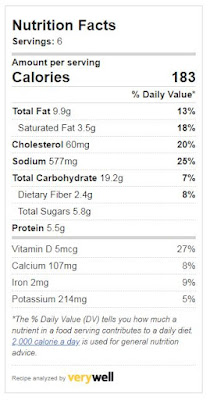"OH NO! That looks nothing like the picture!" Yes, that happens sometimes but everyone said to bring it to the event anyway. It wouldn't be right if I didn't share the failures as well as the successes. It tasted fine but wasn't as pretty as it could have been.
I kneaded the biscuit dough about 5 minutes before I realized it was only supposed to be for 30 seconds. The damage had been done. It was near impossible to roll it out to a nice 1/8 of an inch dough. No pretty swirly rolls for me. The flavour was there but the result turned out to be kind of blobby. It wouldn't have been in the spirit of World War II if I threw it out and started over. All that flour and butter!
I ended up making and using apple jelly instead of raspberry as I had apples browning in my fruit bowl and was trying to keep the costs down. It might not look as pretty as it should but it tasted good. It was less sweet than we're used to but that could be fixed by an extra sprinkle of sugar over the jelly before rolling.
World War 2 Era Bismarck Tea Ring
Biscuit Dough
- 2 Cups sifted Flour
-2 teaspoons Baking Powder
- 1/2 teaspoon Salt
- 4 Tablespoons Butter or Shortening
- 3/4 Cups Milk
Mix flour, salt and baking powder and sift. Cut in the butter or shortening and add milk slowly until a dough is formed. Flour your hands and knead for 30 seconds or until all is combined. Roll out on a lightly floured piece of parchment paper on a cookie sheet until the dough is a rectangle about 1/8 of an inch thick.
Filling
-1/2 Cup Raspberry Jam
Glaze
- 1 Cup Powdered Sugar
- 2 Tablespoons Milk
- 2 Tablespoons Raspberry Jam
Instructions:
Preheat oven to 400° F. Spread a thin coat of raspberry jam on the dough. If you make it thick, it will slide out and make a mess. Starting at one long side of the dough, carefully roll it up until you have a log. Bend the two ends together to form a circle and cut 1 inch slices (leaving some dough to keep it in a ring). Twist each slice so the cut edges are facing up. Bake for 30 minutes on a parchment lined cookie sheet. Remove to a cake rack. Combine jam, sugar and milk to make a glaze. Drizzle glaze on the top with a spoon and serve warm.
A bunch of us looked at the original photo and aren't entirely convinced that the hole in the center wasn't cut out after it was baked. Some theorized it might have been baked in a bundt pan. My ring baked solid so I did what you're supposed to do when you cook a blob: covered it in gaze. I'd love to see what you end up with if you try it. If I make it again, I'll update with the results. This recipe is from 10 Steps to Perfect Baking (1937.)










